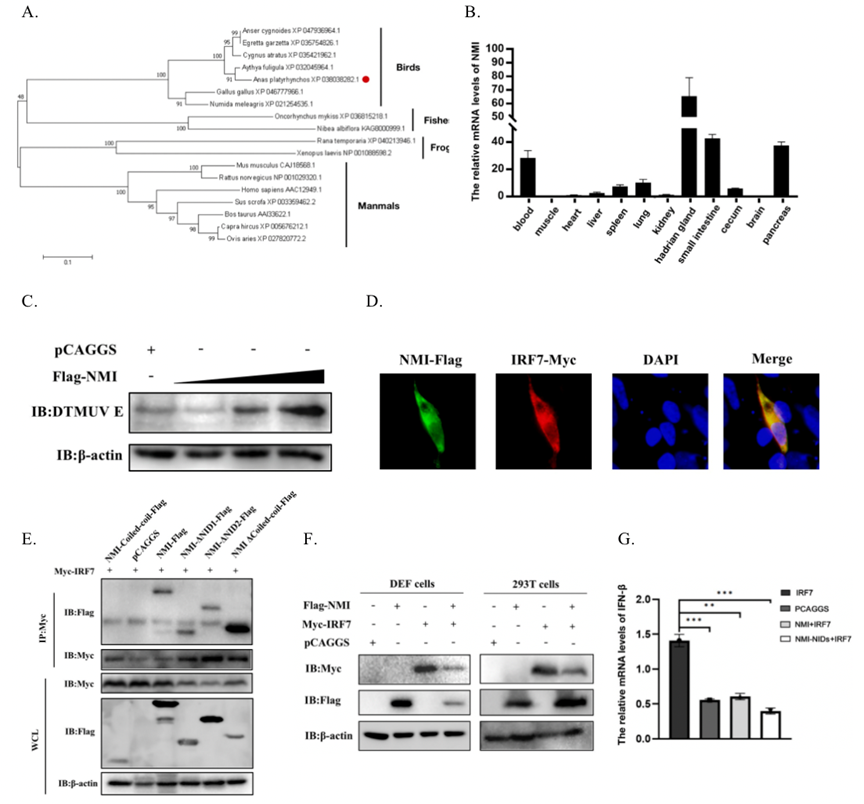Duck Tambusu virus (DTMUV) is a newly emerging flavivirus discovered on farms in China in 2010. The disease in ducks is mainly manifested in a serious decrease in egg production, fallopian tube and ovarian symptoms, and severe nervous system symptoms, which has a huge impact on the agricultural economy. N-myc and STAT interactor (NMI) is an interferon-induced protein, which plays a variety of biological functions by participating in signal transduction and transcriptional activation, it has been reported to regulate antiviral response of different viruses in many species. However, the role of NMI in ducks during (DTMUV) infection is completely unknown. In order to reveal whether duck NMI (duNMI) is involved in the antiviral response in the process of DTMUV infection and its role, we cloned and identified duNMI gene, and conducted sequence analysis of duNMI.Analysis of tissue distribution of duNMI in 7-day-old ducks shows that the expression of duNMI is the highest in harderian gland, followed by small intestine and pancreas. Subsequently, we found that mRNA level of duNMI increases significantly after DTMUV stimulation, and overexpression of duNMI inhibits DTMUV replication in a dose-dependent manner. Besides, duNMI inhibits the transcriptional activity of IFN-I related cytokines. Specifically, we confirmed that duNMI interacts with duck regulatory factor 7 through NIDs domains and inhibit its expression and activated-IFN-β. These results support that duNMI is an inhibitor of antiviral innate immune response in the process of DTMUV infection, which will provide a theoretical basis for the prevention of DTMUV infection. The related research has been published in the journal Poultry Science under the title "N-myc and STAT interactor degrades interferon regulatory factor 7 mediated type I interferon signaling to promote duck Tembusu virus replication" and is accessible at the following DOI: https://10.1016/j.psj.2024.104269.


